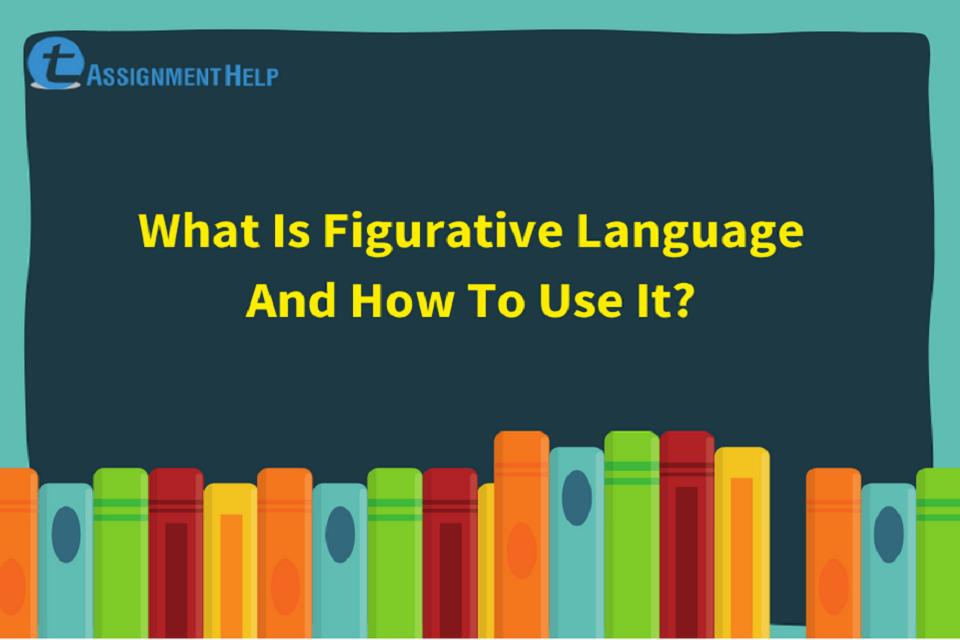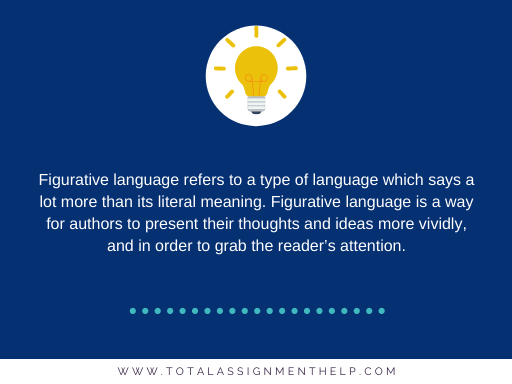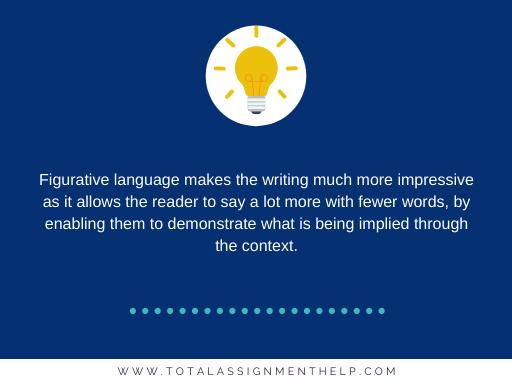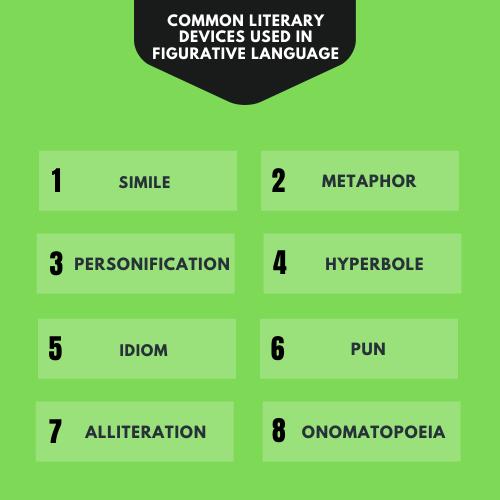What Is Figurative Language And How To Use It?

Writing as a means of communication has evolved and changed a lot over the past decades. Many of the words have a completely different meaning today in some parts of the world as opposed to what they meant in the beginning. One such feature which reflects the evolutionary nature of literature is the figurative language.
In this article, we will talk about figurative language and explore:
- What is figurative language?
- Importance of figurative language, and
- Some common types of figurative language techniques
So let’s get started!
Subscribe our YouTube channel for more related videos
What is figurative language?
Figurative language refers to a type of language which says a lot more than its literal meaning. Figurative language is a mean for authors to present their thoughts and ideas more vividly, and in order to grab the reader’s attention.
It can usually be found in semi-formal or in-formal modes of writing, such as magazines, fiction, poems, newspaper articles, blog articles and many more. Figurative language serves as an important tool which helps the author to be creative and bring their words to life.
In order to make their writing more interesting, authors often use their words in such a way, that it evokes additional thoughts and feeling among the readers, in addition to implying the literal meaning of the words. It helps them in adding a sense of imagination to their writing and makes it much more interesting.
Figurative language involves the use of certain literary devices, in order to enhance the meaning of the sentences, such as simile, metaphor, irony etc. Using such literary devices enables the author to be more creative with their words and make their writing more vivid.
Importance of figurative language
Figurative language makes the writing much more impressive as it allows the reader to say a lot more with fewer words, by enabling them to demonstrate what is being implied through the context. It takes the writing from being boring and to the point, to multiple dimensions and opens it up to the interpretation of the audience.
A well-written piece of figurative language may have multiple meanings, all of which may be true. It all depends upon the skills of the writer and the imagination of the reader, to interpret the text the way they want to. Writings which are primarily aimed at entertainment such as movie scripts, children books, fantasy novels, comics etc. often portray vast use of figurative language.
Even in day to day conversations, the use of figurative language is very common. It is quite possible that you may have been using figurative language in your daily conversations with colleagues without even knowing it. For example, The phrase, Time is Money! or It’s raining cats and Dogs out there, both are common figurative language phrases, which are used widely all across the world.
Furthermore, in many places and instances, figurative language phrases are not easily understood by people, simply due to non-familiarity with them. Therefore, it is important to read a lot and learn a new figure of speeches which are commonly being used by the masses, in order to be able to communicate a lot better.
How to use figurative language?
Figurative language comes in different forms, and there is no set of guidelines, to writing them. However, there is one important aspect of using figurative language, which you should keep in mind, which is, figurative language is mostly implied with the help of some context. Therefore, it is not always possible for one figure of speech to have the same meaning everywhere.
Since figurative language is a type of language which is adapted and evolved over the years, it differs from region to region. Therefore, a phrase which is commonly used in one part of the world may have completely different meaning elsewhere. For example: In England, the word Bird is often used to address a girl, wherein Australia, there are no such connotations attached to it.
Hence in order to use figurative language appropriately, it is important that you understand the cultural and social norms of the region, and use the phrases which are commonly used by locals. For example The phrase, “Do you have cash? No I brought my Plastic” may not have any meaning to people anywhere in the world, whereas, for an Englishman, it makes perfect sense, because credit cards in England are often referred to by the plastic.
Common types of figurative language devices used in literature:
Let us now have a look at some of the most commonly used type of figurative language features in the English language:
- Simile
- Metaphor
- Personification
- Hyperbole
- Allusion
- Idiom
- Pun
- Onomatopoeia
- Alliteration
- Symbolism
A simile is a literary device, which is often used as a figurative language. It involves, comparing two different things, by relating one common feature or behaviour of them, using connecting words, such as: “Like” or “As”.
For example: “I slept like a baby” or “He’s cold as ice.”
Metaphor is in many ways similar to simile, as it also involves comparing things. However, there is one key difference between the two which is, in simile, the two objects of comparison are compared with the use of the word “like”. In a metaphor, the sentence compares the two entities by implying the same thing.
For example: “You’re an elephant” or “She’s been crying a river.”
Comparison between things, living or non-living is one of the most common forms of figurative language. Personification is a figurative language, where, the author compares, or implies human attributes or qualities, to inanimate or non-living things.
For example: “The howling of wind” or “The sunflowers turned their heads.”
Hyperbole is one of the most useful tools in figurative language. It means, exaggerating things or present facts in a much extravagant way than necessary. It helps the author to highlight a specific point, for the sake of argument.
For example: “I have been waiting here for ages” or “He’s so thin, you can knock him over with a feather.”
In simple word, allusion can be described as to refer one thing to another. It can be a person, place, event or any piece of writing. It is often used in fantasy writing or along with other literary devices in figurative speech.
For example: “Who do you think you are Romeo and Juliet?” or “It’s like a David and Goliath situation.”
Idioms are a form of literary device which are widely used in figurative language. It involves using certain terms and phrases, which have a definite meaning apart from their literal meaning. An idiom is usually a group of words, which originate from historical or other significant events.
For example: “He kicked the bucket” meaning, He passed away or “Let’s call it a day” meaning lets end todays work here.
A pun is a figure of speech in which the author uses wordplay in order to imply a different meaning than what is being said.
For example: “I am a carpenter, I know the drill” or “A pessimist’s blood type is always B- negative.”
Onomatopoeia is an impressive literary device, which helps us to define specific sounds with the help of words. They are often used in our day to day conversations to describe different sounds such as “knock-knock” and many others. It is quite often used in combination with puns to make a figure of speech.
For example: “Mooing of a Cow” or “Woof-Woof” or “Screeching of a Tire.”
Alliteration is used in figurative language as a sound device. It involves repeating the sound made by a consonant to put emphasis on the sentence.
For example: “She sells seashells on the seashore” or “The wild, woolly walrus waits and wonders as I walk by”
Symbolism is an important tool of figurative language as it enables the author to present his ideas and thoughts with the help of visual means without the use of imagery. In addition to visual means, symbolism enables the author to signify at a larger meaning.
For example: “A red rose represents love” or “The colour blue represents sadness” or “The use of a chalkboard can symbolise the importance of education.”
This completes our list of figurative language techniques which you can use for your next piece of writing!
Total Assignment Help
Incase, you are looking for an opportunity to work from home and earn big money. TotalAssignmenthelp Affiliate program is the best choice for you.
Do visit :https://www.totalassignmenthelp.com/affiliate-program for more details
Total Assignment help is an online assignment help service available in 9 countries. Our local operations span across Australia, US, UK, South east Asia and the Middle East. With extensive experience in academic writing, Total assignment help has a strong track record delivering quality writing at a nominal price that meet the unique needs of students in our local markets.
We have specialized network of highly trained writers, who can provide best possible assignment help solution for all your needs. Next time you are looking for assignment help, make sure to give us a try.
Looking for Assignment Help from Top Experts ?
Get the best Assignment Help from leading experts from the field of academics with assured onetime, 100% plagiarism free and top Quality delivery.






